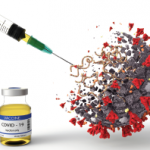The addition of the novel 2009 H1N1 influenza A virus (H1N1) to this year’s flu season has resulted in confusion and concern among patients and physicians—and rheumatologists are no exception. Differences in epidemiology between the seasonal flu and new flu strains as well as uncertainty about the safety and availability of the H1N1 vaccine has left physicians wondering what the correct approach is for their patients. The Food and Drug Administration (FDA) recently approved supplements to existing vaccine licenses to protect against the H1N1 virus. The new vaccine is a standalone monovalent vaccine that is separate from seasonal flu vaccine. It will be made using the well-established egg-based manufacturing process, according to the FDA.1
New Vaccine Concerns
“Although the H1N1 vaccine is a new vaccine that has not been administered in large groups of people, it is made using a similar process to the seasonal influenza vaccines currently in use, and the tolerability profile is expected to be similar,” says Jeffrey Curtis, MD, associate director of the University of Alabama at Birmingham Center for Education and Research on Therapeutics (CERTs) of Musculoskeletal Diseases. “There is often an uncertainty factor associated with any new, widely recommended medical service that can be confusing. For example, patients will now need to receive two influenza vaccinations—one for seasonal influenza and the other for H1N1.”
Patients with rheumatic diseases are at increased risk for morbidity and mortality from the H1N1 virus for many reasons. One is that these patients have at baseline twice the risk for acquiring infections when compared with the general population.2
“Infections kill our patients,” said Dr. Curtis. “Vaccinations can potentially reduce the risk of some infections and possibly lessen mortality and morbidity.”
FLU FACTS ONLINE
The Department of Health and Human Services has launched a new Web site to provide the most current information on the seasonal and H1N1 flu to healthcare providers. Visit www.flu.gov for the latest updates on the flu.
Younger Patients Hardest Hit
The age groups being affected by the H1N1 flu are younger than those seen in seasonal flu, which usually hits the elderly the hardest. This requires healthcare providers to find ways of reaching a different target group.
“Experience from the flu season in the southern hemisphere shows that those hardest hit are between 15 and 40 years of age,” says Kathleen L. Sullivan, MD, professor of pediatrics at Children’s Hospital of Philadelphia. “This is largely in the age range of people with rheumatological conditions.”
Medications and the Flu
Many medications used to treat rheumatic disorders have an immunosuppressive effect. While therapeutic in the context of the disease, these drugs can cause additional concerns for patients during flu season.
Although the H1N1 vaccine is a new vaccine that has not been administered in large groups of people, it is made using a similar process to the seasonal influenza vaccines currently in use, and the tolerability profile is expected to be similar.
—Jeffrey Curtis, MD


